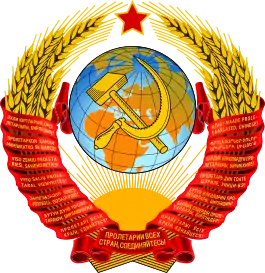Soviet Union–Tonga relations
Tonga and the Soviet Union established formal diplomatic relations in 1976. Tonga was the first Pacific Island country to establish relations with the USSR.
 | |
Soviet Union |
Tonga |
|---|---|
Overview
Tongan-Soviet relations may be viewed in the context of the two countries' interests. In the mid-1970s, the entirety of Oceania was firmly aligned with the Western bloc in the context of the Cold War, and the Soviet Union, despite its eastern coast being on the Pacific Ocean, was excluded from participation in regional matters. Tonga, meanwhile, had recently regained full sovereignty after being a protectorate of the United Kingdom and was establishing its own foreign policy. Aligning itself with the West, Tonga sought development aid from its Western partners.
Tonga's move to establish relations with the USSR immediately followed Australia's refusal to finance the modernisation and expansion of Fuaʻamotu International Airport and was widely perceived in Australia as a means deployed by the Tongan government to pressure the West into increasing its aid to Tonga. The Australian government thereupon announced that it would finance the airport's upgrade after all and, in 1977, increased its overall economic aid to Tonga (from A$406,000 to over A$1,000,000), before opening a High Commission in Nukuʻalofa in 1980.
In 1987, Tonga "played the Soviet card" again (in the words of E. Huffer), when the then crown prince Sia'osi Taufa'ahau Manumata'ogo Tuku'aho Tupou paid a State visit to the Soviet Union, and declared while in Moscow that "Tonga and the Soviet Union are linked, not separated, by the Pacific Ocean", adding that "the USSR [is] a Pacific nation with legitimate interests in the region".
Relations between Moscow and Nukuʻalofa remained pragmatic rather than ideological. Tonga was, at the time, a quasi-absolute monarchy, with no ideological sympathy for communism.
See also
- Russia-Tonga relations
References
- HUFFER, Elise, Grands hommes et petites îles: La politique extérieure de Fidji, de Tonga et du Vanuatu, Paris: Orstom, 1993, ISBN 2-7099-1125-6, pp. 272–282

